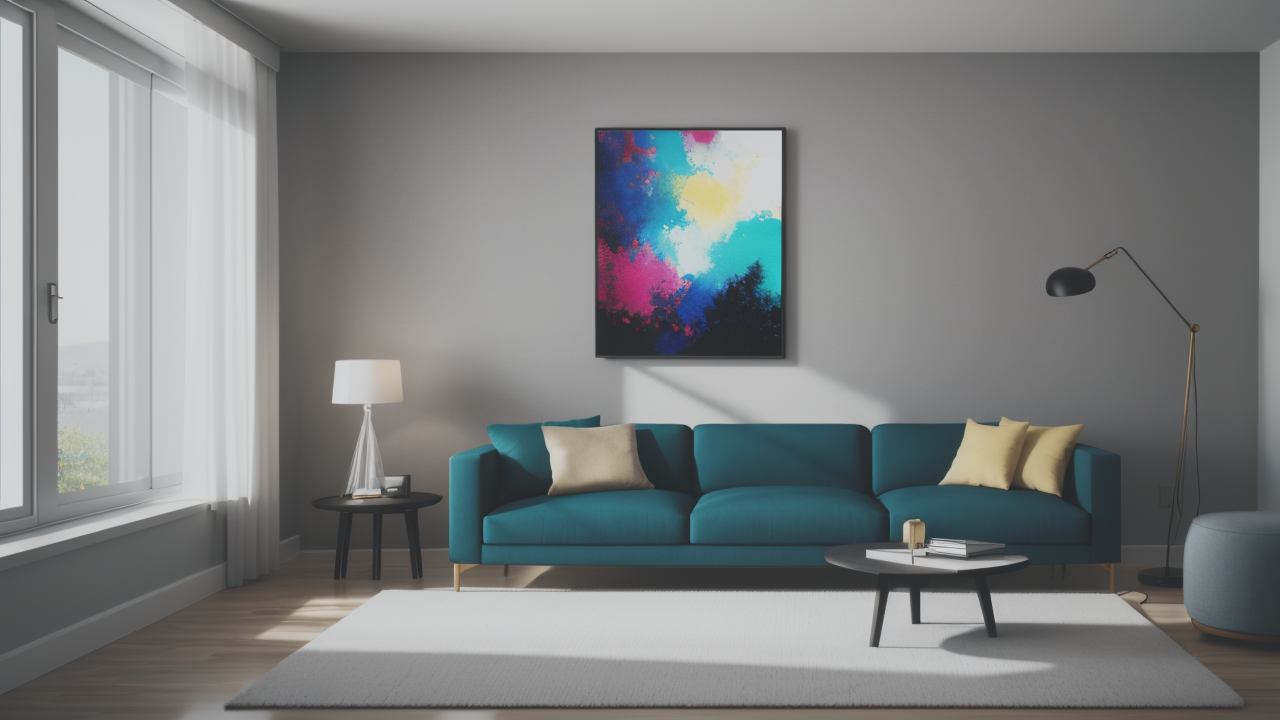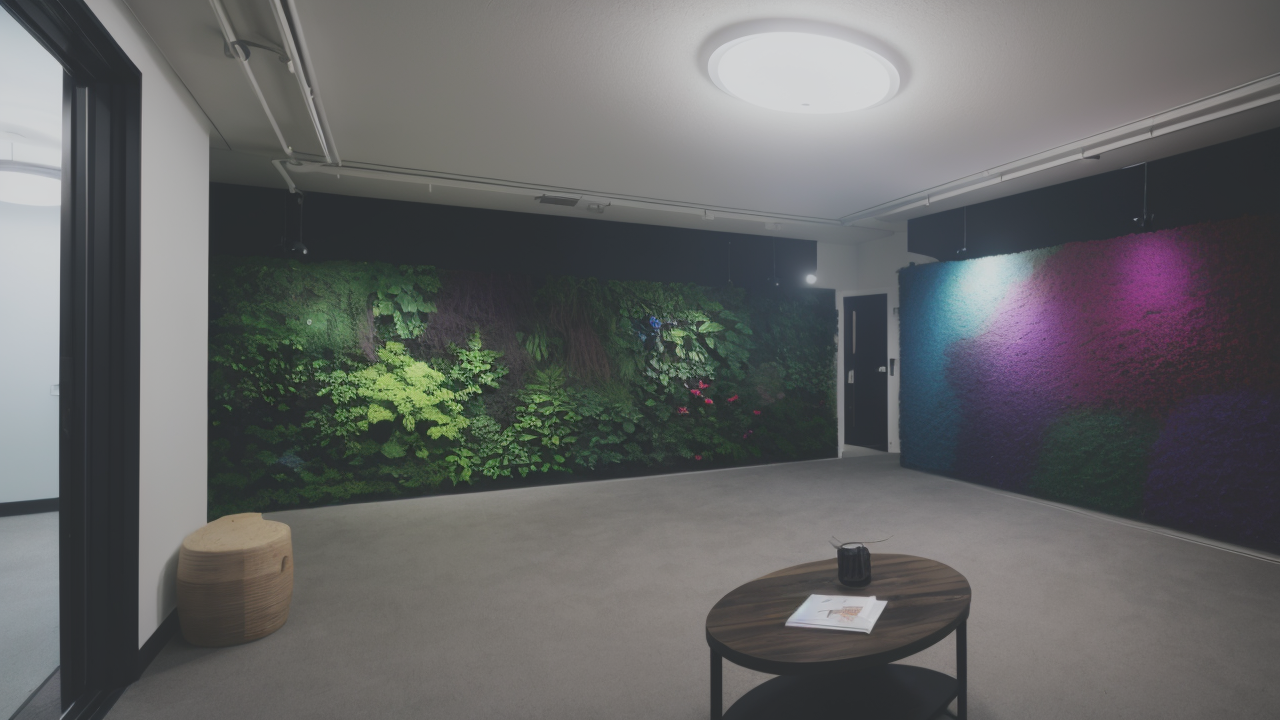
Wall Art Trends in the US: From Texture Plaster to Colorful Abstracts
The Rise of Texture Plaster in Contemporary Home Decor
Understanding Texture Plaster: An Overview
Texture plaster is a versatile wall finish that's gaining popularity in US homes. It's a mixture of plaster and additives that create unique textures. This material can be applied to walls and ceilings for a 3D effect. Texture plaster comes in various forms, from smooth to highly textured. It can mimic natural surfaces like stone or concrete. The application process involves spreading the plaster and shaping it with tools. Texture plaster offers both visual and tactile appeal to interior spaces. It's durable, easy to maintain, and can hide wall imperfections. Homeowners can choose from a wide range of colors and textures to suit their style.

The Appeal of Textured Walls: Why It's Trending
Textured walls are becoming a hot trend in US home decor. They add depth and character to otherwise plain surfaces. Texture plaster creates a focal point in a room without the need for artwork. It can make spaces feel cozier and more inviting. Many homeowners appreciate the handcrafted look of textured walls. They offer a unique alternative to traditional paint or wallpaper. Textured walls can also improve room acoustics by reducing echo. They're versatile enough to complement various design styles, from modern to rustic. The tactile nature of texture plaster engages the senses and adds interest to interiors. It's a way to personalize spaces and create a one-of-a-kind ambiance.
The Best Practices for Texture Plaster Applications
To achieve the best results with texture plaster, proper preparation is key. Start by cleaning and priming the walls. Choose the right tools for your desired texture, such as trowels or brushes. Apply the plaster in thin layers, building up to the desired thickness. Work in small sections to maintain consistent texture. Allow each layer to dry before adding more. Experiment with different techniques to create unique patterns. Consider using templates or stencils for more precise designs. Seal the finished texture plaster to protect it and enhance durability. Hire a professional for complex patterns or large-scale applications. Regular maintenance will keep your textured walls looking fresh for years.
Colorful Abstracts as a Counterpoint to Textured Walls
The Role of Color in Modern Home Decor
Color plays a crucial role in modern home decor, setting the mood and atmosphere. Bold, vibrant hues are making a comeback in US homes. Color can make spaces feel larger, cozier, or more energetic. It's a powerful tool for expressing personality and style. Modern color trends include rich jewel tones and earthy neutrals. Color blocking and unexpected color combinations are gaining popularity. Monochromatic schemes with varying shades of one color create depth. The right color choices can highlight architectural features or artwork. Many homeowners are moving away from all-white interiors to more colorful spaces. Color can also be used to define zones in open-plan living areas.

How Colorful Abstracts Enhance Textured Walls
Colorful abstract artwork provides a striking contrast to textured walls. The smooth canvas of abstracts complements the tactile nature of texture plaster. Bold colors in artwork can bring out subtle hues in textured surfaces. Abstract pieces add visual interest without competing with wall textures. Large-scale abstracts can serve as a focal point against a textured backdrop. The fluidity of abstract forms softens the rigidity of some textured patterns. Colorful abstracts can tie together different textured elements in a room. They offer a way to introduce seasonal color changes without altering the walls. Abstract art allows for personal interpretation, adding depth to the decor. The combination of texture and color creates a multi-dimensional visual experience.
The Influence of Color Theory on Wall Art Selection
Color theory guides the selection of wall art to complement textured surfaces. Understanding color relationships helps create harmonious interiors. Complementary colors can make both the art and the walls stand out. Analogous color schemes create a cohesive look between art and walls. The intensity of colors in artwork can balance or enhance wall textures. Neutral textured walls provide a versatile backdrop for colorful abstracts. Consider the emotional impact of different colors when selecting art. Use color wheels to find pleasing combinations for your space. The size and placement of colorful art affect its impact on textured walls. Remember that lighting can change how colors appear on both art and walls.
The Future of Wall Art in the United States
Innovations in Wall Art Materials and Techniques
The wall art scene in the US is evolving with new materials and techniques. 3D printing is creating intricate wall sculptures and textures. Smart walls with integrated LED lights are gaining popularity. Sustainable and eco-friendly materials are becoming more common in wall art. Artists are experimenting with unconventional materials like recycled plastics. Digital art displays allow for ever-changing wall decor. Interactive wall installations engage viewers in new ways. Augmented reality is blending digital and physical wall art experiences. Nano-coatings are making wall art more durable and easy to clean. Modular wall art systems offer flexibility in design and arrangement. These innovations are expanding the possibilities for personalized home decor.

Predicting the Next Big Trend in Wall Decor
The next big trend in US wall decor may combine technology and nature. Biophilic design, bringing nature indoors, is likely to grow in popularity. We might see more living walls and moss art installations. Customizable wall art that changes with moods or seasons could become mainstream. Textured wallpapers that mimic natural materials may rise in popularity. Holographic art projections could offer dynamic wall decor options. Minimalist, large-scale art pieces may dominate in response to busy lifestyles. Artisanal and handcrafted wall art could see a resurgence. Interactive wall art that responds to touch or sound might gain traction. The trend towards multifunctional spaces may lead to adaptable wall art solutions.
The Impact of Cultural Shifts on Wall Art Preferences
Cultural shifts are reshaping wall art preferences in the United States. There's a growing appreciation for diverse artistic voices and styles. Social media influences are driving more bold and Instagram-worthy wall choices. The work-from-home trend is increasing demand for inspiring home office wall decor. Environmental concerns are leading to more upcycled and sustainable wall art options. Global design influences are bringing international styles into US homes. The wellness movement is inspiring calming, nature-inspired wall art. There's a rising interest in supporting local artists and artisans. DIY culture is encouraging more personalized and handmade wall decor. The desire for authenticity is driving interest in vintage and antique wall pieces. These cultural shifts are creating a more eclectic and personalized approach to wall art.


